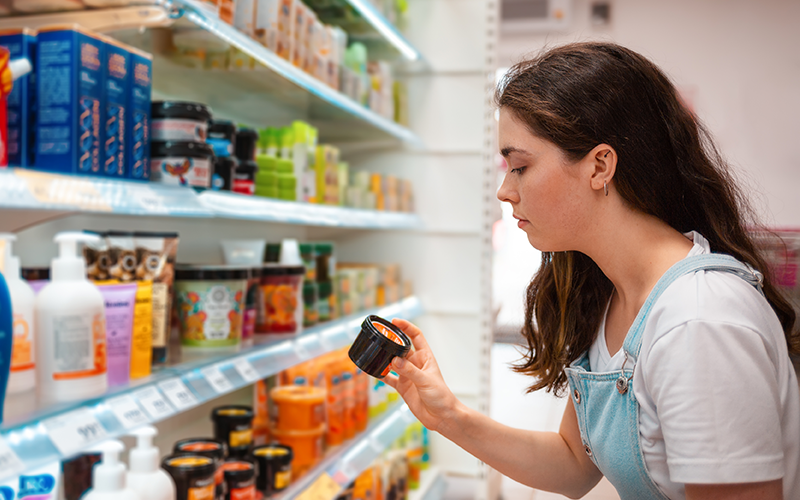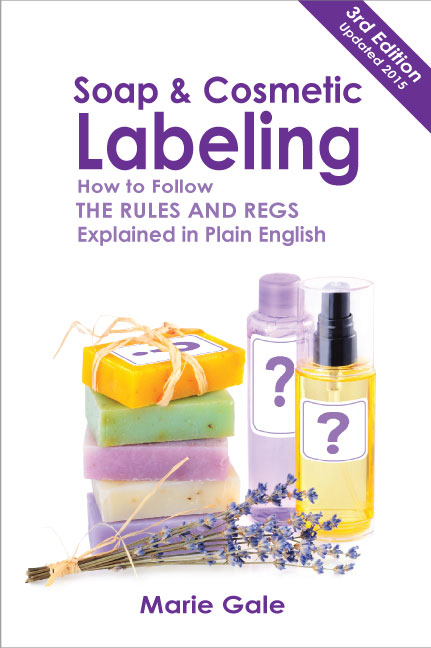This is part of the Labeling Basics series in which I am taking labeling back to its most fundamental parts, starting with the legal terms used and then going on to each requirement for soap and cosmetic labels.
Cosmetics and consumer commodities are products that are applied to the human body to beautify, promote attractiveness, or cleanse. (See What is a COSMETIC?)
Non-cosmetic consumer commodities are products that aren’t applied to the human body (paper towels, toilet paper, laundry soap, dishwashing detergent, etc.). They may touch the human body, but they aren’t applied with the intent of cleansing, beautifying, or promoting attractiveness.
Body/face/hand soap is, by default, a cosmetic because it is applied to the human body to cleanse. However, there is an exemption for soap from the legal definition of a cosmetic. Soap is considered not to be a cosmetic IF:
- The bulk of the soap is the alkali salt of fatty acids (lye/oil); AND
- The cleansing comes from the alkali salt of fatty acids (not added detergents); AND
- It is marketed and sold only as “soap”; AND
- It only claims to clean (no “moisturizing” or “exfoliating” claims, for example).
ALL products have requirements for what must go on the label. However, there are some differences in what is required on labels for cosmetics and non-cosmetics. The following table is a quick reference guide which shows what is required:
| Cosmetic | Non-Cosmetic | |
|---|---|---|
| Regulated By | Food & Drug Administration (federal) and Usually also state agencies | Federal Trade Commission (labeling) Consumer Product Safety Commission (safety) and state agencies |
| Allowable Marketing Statements | “Moisturizes” or “exfoliates” or anything that says the product “beautifies” or “makes attractive” | For SOAP used on the body, only that it “Cleans”. Otherwise, no specific requirements |
| Product Name | Required on Front Panel | Required on Front Panel |
| Ingredient Name in Product Name | Prohibited | No Restriction |
| Product Identity (What it is) | Required on Front Panel | Required on Front Panel |
| Ingredient Name in Product Identity Statement | No Restriction | Allowed only if ingredient is present in a functional amount |
| Net Contents | Required on Front Panel | Required on Front Panel |
| Ingredient Declaration | Required | Not required |
| Business Name & Address | Required | Required |
| Street Address | Actual street address required unless address is listed under the business name in a print or online phone or city directory | Actual street address required unless address is listed under the business name in a readily accessible, publicly available online resource (website or directory) |
| Safety Substantiation | Must have safety substantiation for the product and ingredients | None |
| Cosmetic Warning Labels | Required on some products | n/a |
| Bubble Bath | Warning required if not labeled for adult use only | n/a |
| Hazardous Substance Warning | Required for products containing 2% or more Bergamot Oil or a high percentage of alcohol (flammable) | Required for products containing 2% or more Bergamot Oil or a high percentage of alcohol (flammable) |
| Children’s Soap | No restrictions | Must meet safety standards. testing may be required. |
| Toys or non-soap embeds in children’s products | Must meet safety standards. Safety testing may be required. | Must meet safety standards. Safety testing may be required. |
| Color Additives | Must be approved for use in cosmetics | No restrictions but must be safe |
| Federal Registration | Facility registration required if not exempt as a small business (less than $1 million annual revenue) | None |
| Federal Product Listing | Required if not exampt as a small business (less than $1 million annual revenue) | None |
| State Registration | Some states require registration of cosmetic manufacturing facilities and/or products. | None |
Why is it important?
The regulations and labeling requirements for cosmetics are different than non-cosmetics. It’s important to know what applies to the particular product you are working with, otherwise you could end up with your product being illegally labeled (and thus illegal to sell).




Leave a Reply